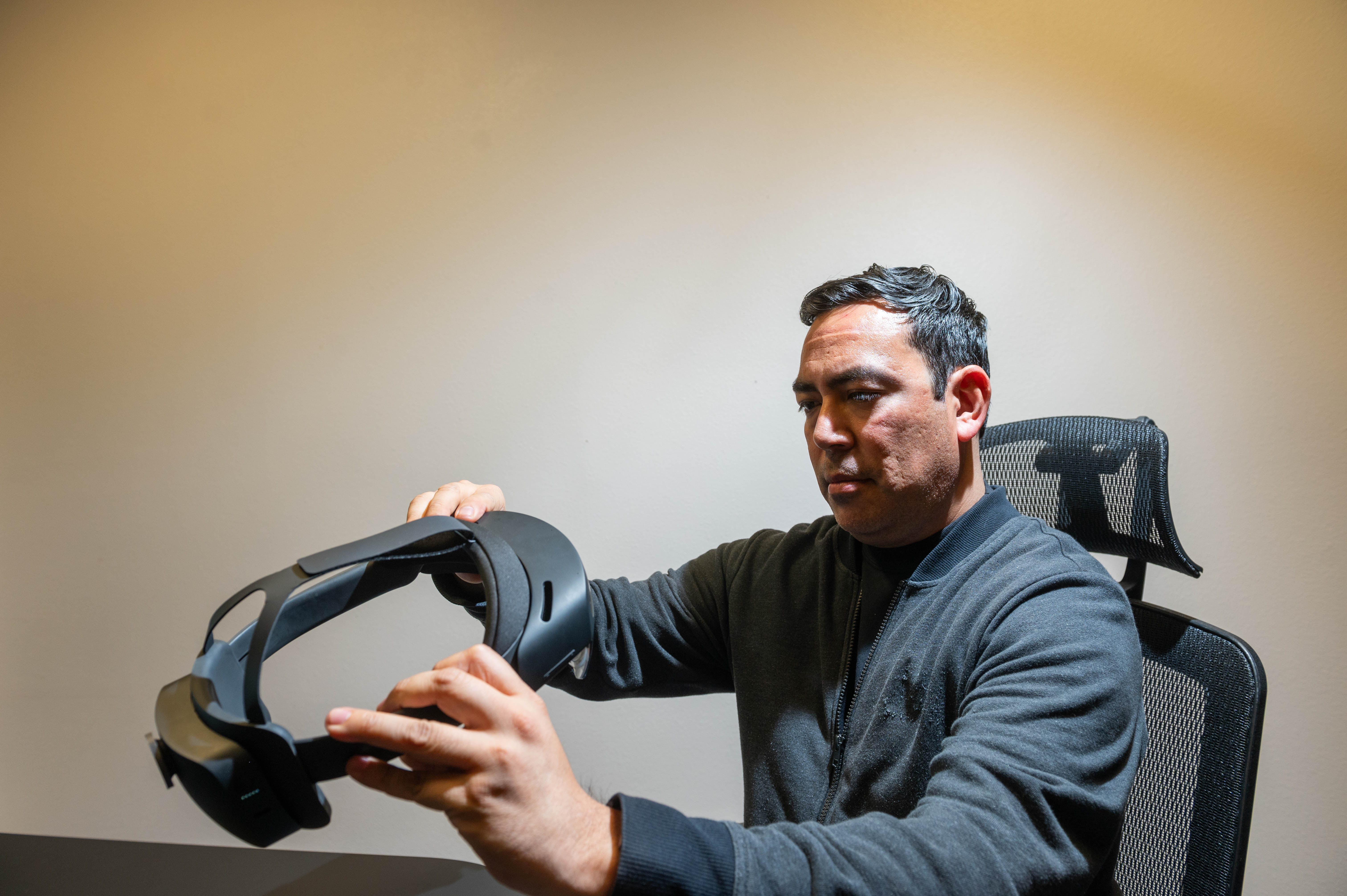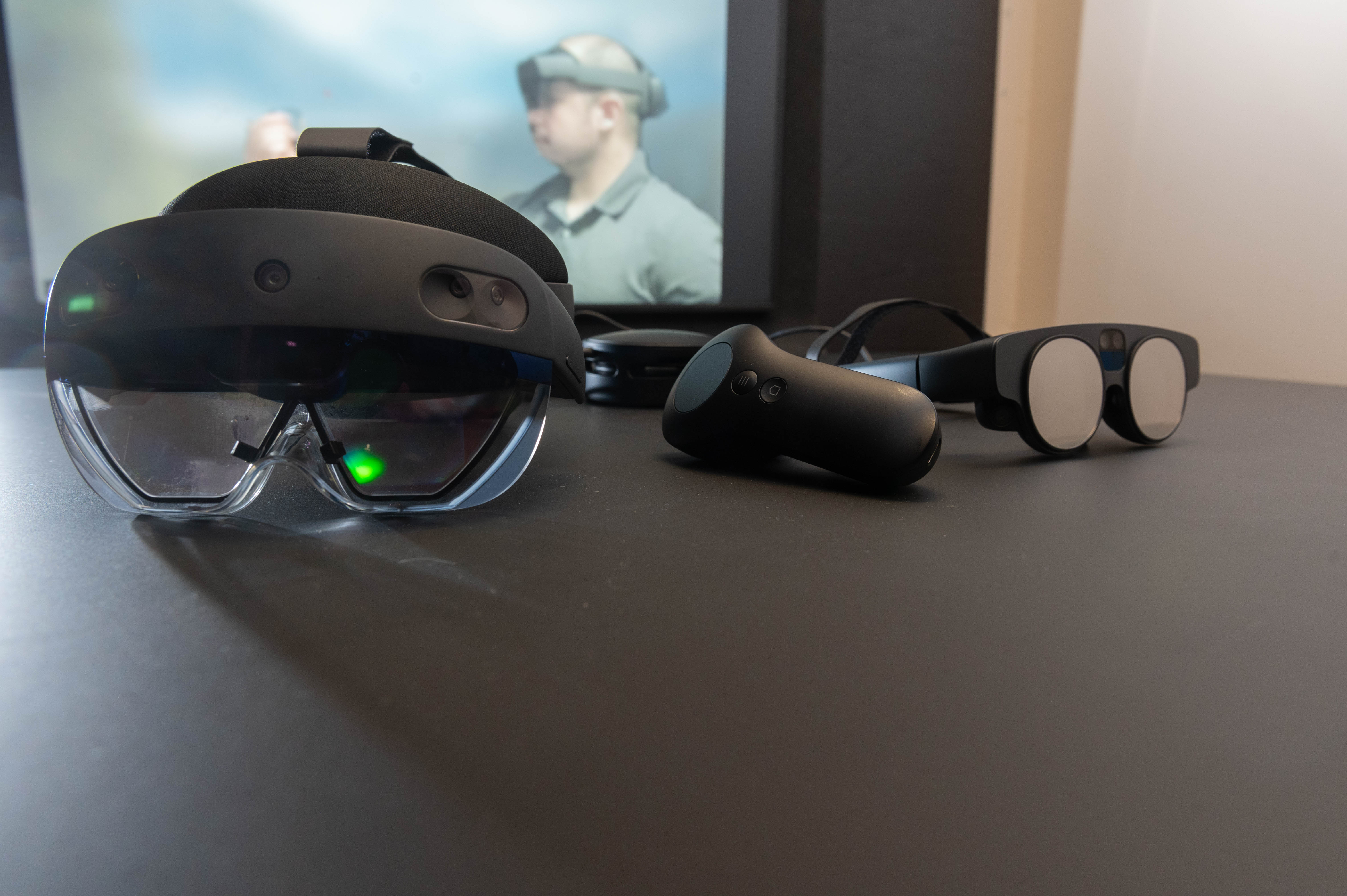In the very near future, students taking online courses will have a new perspective that will help them interact with classmates and faculty, thanks to a new hologram technology being developed by Cisco.
New Mexico State University is one of the only higher education institutions that get to test that technology to see how well it will work in a classroom, with students and faculty members submitting feedback to Cisco on how well they think it works and what may need to be changed.
“The idea is for them to give us the opportunity to play around with it and see if there’s a market for it, and give them an opportunity to make some updates to the application,” said Andrew Sedillo, director of microcredentials instructional design for NMSU Global Campus. Sedillo is part of the NMSU team oversees the beta testing on campus. Others in the team include Robbie Grant, director of academic technology; Beth Apodaca, director of instructional design; and David Chavez, digital learning multimedia specialist.
The NMSU Global team reached out to Cisco upon learning about the company’s beta testing of its Webex Hologram. Apodaca, Grant and Sedillo then traveled to Cisco’s research and development center in Oslo, Norway, to meet with representatives and learn about the technology, which utilizes headsets and other equipment.
“When they thought of this technology, they were looking at solutions for virtual meetings, so coming to a higher ed institution is unique for them,” Apodaca said. “We got to see the passion that they have for these machines, and they know every centimeter.”
The hologram testing site at NMSU is located inside Milton Hall, where students and faculty get the opportunity to don a pair of goggles and manipulate the 3D models.
“When the instructors finish the demo, they’re excited to see how this will work in their college,” Chavez said. “They get to see the holograms from other students. It’s a neat experience.”
Sedillo said although the technology is still out of reach for many educational institutions because of its steep price, he’s excited to see how fast it evolves and how quickly it will catch on.
“When this technology is blowing up in the future, our names will be part of the whole feedback process,” Sedillo said. “It’s neat to be able to beta test all of this technology.”
Grant said it also gives NMSU another opportunity to continue being at the forefront of cutting-edge technology. Last year, NMSU Global partnered with Meta to give the technology giant a glimpse at how immersive technology can best shape the student learning experience. These partnerships also allow NMSU Global to address concerns about the possibility of an enrollment cliff in the next two years.
“If we can partner with companies in an online format that no one else is doing, then potential students can see that we’re using this technology, which makes our students very recruitable to other companies,” Grant said. “This allows them to be part of an innovative project, part of something that other schools aren’t a part of.”


